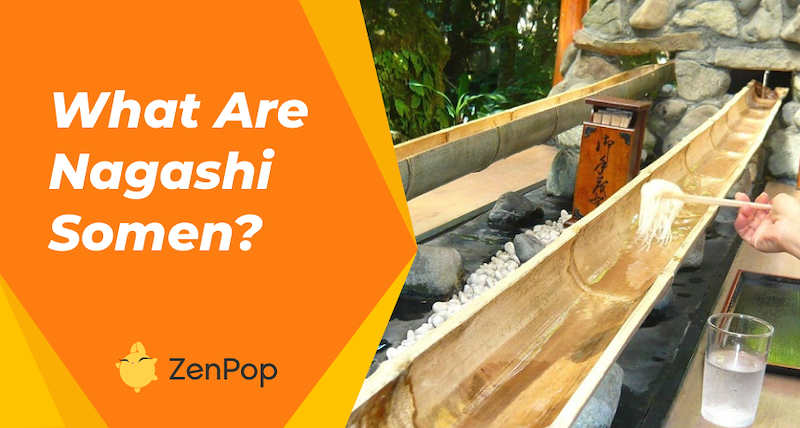
</title><meta name="robots" content="noindex">What are Nagashi Somen? (and where to eat them)
Nagashi Somen literally means “flowing noodles.” It is a fun way to eat noodles where you have to catch them. I guess sometimes, you do have to work for your food. The noodles are served in restaurants with long bamboo shoots filled with running water where strings of noodles are dropped in to flow to the customers. When the chef yells “ikuyo!” the noodles flow down toward the customers in the bamboo shoots which seem like a small river. Unfortunately, what you catch is what you eat, so it is advisable to stay alert to catch your lunch so it doesn’t pass you by. That certainly wouldn’t be the best time to fumble your chopsticks!
What are Nagashi Somen
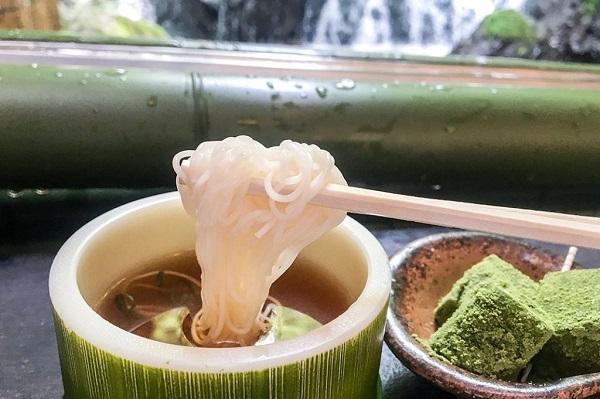
Somen noodles are thin Japanese white noodles that are made from wheat flour. The weird thing about these noodles is that they are served cold or even over ice during summer. You can then eat it with sauce, dashi stock and cool toppings. Folks in Japan have been consuming it since the eighth century. Still, it was only recently that they started floating it, and it became Nagashi (flowing) somen.
The nagashi was created in the 1950s, and its creation is attributed to the restaurant named chiho no ie (千穂の家) in a bid to make full use of the pure spring water in the vicinity. It has quickly gained fame ever since then. Today you can find it in other places in Japan, some people also serve noodles this way at home. But, let’s be honest, it’s more fun with a long bamboo shoot.
Everything You Should Know About Japanese Flowing Noodles
It’s pretty tricky catching your own noodles in a restaurant, so we came up with some tips to help you out.
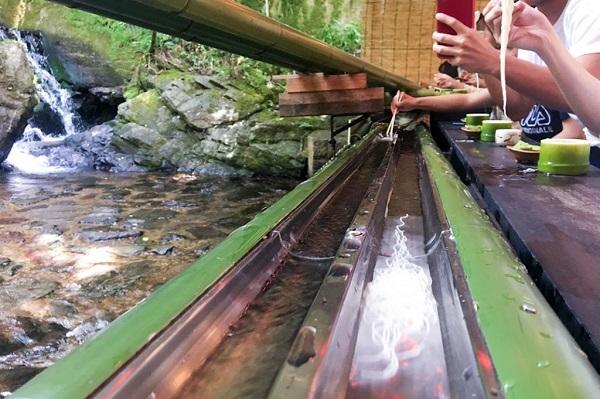
A nifty trick you can try is leaving your chopsticks in the water so you don’t miss any of the noodles, but the other way is much more fun. Customers are usually already well seated before the noodles are served. It comes really fast, and your reflexes will be tested as well as your chopsticks skills. What you have to do is to dip your chopsticks in the water and catch the noodles.
That is only the first step of this challenge. The next part is getting your noodles into the bowl without losing them all in the water. After getting it into your bowl, you can now dip the noodles in your tsuketsuyu sauce to enjoy a delicious delicacy.
The fact that the noodles are served cold might put some people off for fear that they might turn out soggy, but there’s no need to worry. These noodles don’t get soggy so easily and are very much enjoyable. Some chefs even go to the extent of serving them on ice in order to really draw out the cooling effect.
When Can I Eat Nagashi Somen
Nagashi Somen is served cold, so it’s best enjoyed during the hot days of summer. That is the whole point of it, after all. Summertime in Japan can be particularly hot and humid, so this food was created specifically to chill your body when the weather is hot. During those sweaty months, flowing noodles will help to refresh and cool you down.
In Japan, summer lasts from June to August. That would be a great time to enjoy Nagashi Somen. If it isn’t summertime and you find yourself craving this delicacy, the Tosenkyo Somen Nagashi serves Nagashi Somen all year round. Cool spring water flows from the Tosen gorge almost throughout the year and it is visited by 200,000 people yearly. It is one of the best places to try out Nagashi Somen.
How Does The Nagashi Somen Slide Work?
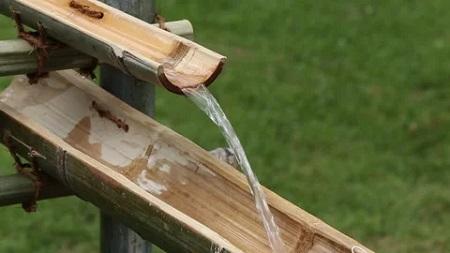
It is a carefully constructed contraption that includes two main things; half bamboo shoots and clean flowing water. The bamboo shoots are arranged in a manner that allows the strings of noodles and water to flow from the top all the way to the bottom.
The Nagashi Somen was invented by the House of Chiho specifically to capitalize on the pure natural springs to bring relief of coolness to the customers during summer, but in the case where that is not available, there are ways to circumvent that with flowing water.
Due to the pandemic, going out to enjoy Nagashi Somen wasn’t exactly viable for everybody, but luckily some companies decided to take it upon themselves to bring the Nagashi Somen to people right in their homes. This was done by creating portable slides made from bamboo shoots or even plastic and little water outlets that allow you to really play with your somen noodles even if you’re not in the great outdoors or a restaurant enjoying your cold noodles.
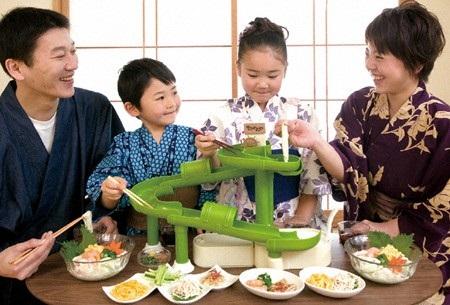
Hirobun Nagashi Somen in Kyoto
One of the best places to enjoy Nagashi Somen is at Hirobun, which is a location just outside of Kyoto. You get the full experience and catch your noodles as it flows by in spring water. Hirobun is a restaurant located in Kibune, a small mountain town near Kyoto. The restaurant opens at 11 am, but people can arrive there as early as 10 am just to get a slot.
The restaurant offers a great outdoor setting where you enjoy your meal. Also, there is a small waterfall near where the customers are seated, and it offers a refreshing view and ambiance to break the summer heat.
Although you might have to wait a little bit to get your spot, it is worth it in the end. There are other places to see when you get to Hirobun, so while you are waiting for your turn to sit, you could check out the Kifune shrine, which is within walking distance, places like Mount Kurama are also quite close.
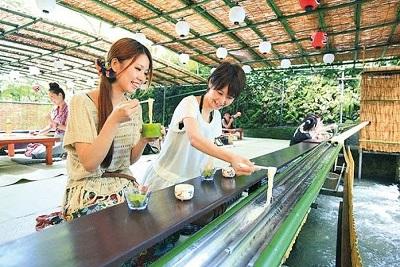
All in all, Nagashi Somen is a great dish if you want to have fun with your food while you’re eating. It is nutritious, perfect for hot weather, and offers a unique dining experience that you might not find easily anywhere else outside of Japan. Take some time out to relax with friends at a cool spot while also testing your chopstick's skills and reflexes. Nagashi Somen gives a new meaning to “catching your own meals.”
If you want to experience food from Japan, why don’t you try ordering our ZenPop Ramen Box to get the best ramen and snack from Japan!
This article was originally written by our freelance writer Umm-Kulthum Abdulkareem, and edited by us.
